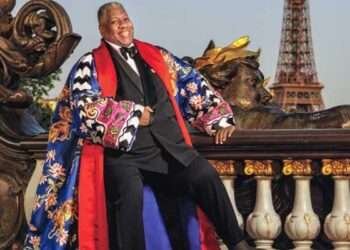In a professional space, style doesn’t have to be elaborate or a vanity fair parade, because class isn’t overtly elaborate and blinding.
Lambert is a marketing professional at a revered consulting firm who had to deliver a presentation on his organizations novel offerings at one of their biggest client’s office. He woke up on the morning, pretty much bright eyed and bushy tailed, donning a pair of bright orange shorts teamed with a T-shirt. Quickly running his hand through his already disheveled hair he booted up in his sneakers and made his way to the meeting.
On getting there, the receptionist denied him entry to the board room to meet the managers of the firm. With much unyielding protest from Lambert he walked off, utterly disappointed and baffled at the receptionist lack of respect.
The question is: Was the receptionist in the right for acting so churlish with him?
YES, will be a dignified response. The general outlook and appearance of employees in an organization signposts a deluge of clients to the organization or repulses them enough to take their business elsewhere. So without mincing words, corporate dressing must be a given in any business setting which desires to leave an indelibly good impression in the minds and pockets of prospective clients.
Corporate dress code is generally laid down rules and set of standards that companies develop to guide employees on the appropriate clothes to wear to work. Dress codes are gradually moving from the mundane conventions of suit and tie to more relaxed and energetic feel of business casual which relatively borders on the fringes of niche services offered by the company and the customers it serves.
Every organization prescribes a level of decency regarding their employee’s appearance whether implicitly or inked out explicitly on the company’s ethics code. For all intents and purposes, the formality of an organizations dress code is adherently informed by the number of interactions employees have with clients. Organizations such as banks, media houses, consulting and conglomerate firms who have employees at the forefront of business meetings must exude professionalism and integrity at all cost and this can only be achieved by the employees being in formal attires.
Interestingly, there’s that tendency of the personal style of employees and that of the organization culture to spar over what is right. Millennial employees tend to infuse personal style into fashion rather than the philosophy of the organization. However, the competitive marketplace has allowed and created space for personal style as companies are favoring casual dressing even in conventional and corporate organizations.
Hitherto, organizations tread on the fringes of what’s conservative and predictable like the suit and tie, crisply ironed shirt, somber and dull colors, clean cut hair and beard, moderate and neutral make up, buttoned up shirts and knee length skirts for the ladies and albeit they still hold resolute, the invasion of style and the contest of who is attuned with what’s in vogue by youthful workforce have altered the perception of what’s favorable in the workspace.

Comparatively, casual dress code is what majority of employees want. Our climate condition doesn’t augur well for the suit and tie classic especially in the constantly sweltering heat most are subjected to in confined office space even with an air conditioning system which isn’t mobile for those business meetings.
Amazingly, the desires and demands of millennial workforce are being adhered to by their employers, as over the years there’s been a shift towards a more casual and relaxed standard even in industries which were previously formal.
What is the relevance of dress code?
Dress codes for most professional outfits are significant selling points for the company. They convey a sense of discipline, diligence, trustworthiness and reliance in the eyes of the client. Although most companies are drifting from the mundane options of requiring their employees to wear “uniforms” to work, these uniforms identifies them as the hired person for the job especially with construction, delivery and supply jobs. Dress codes are quite efficient also as it explicitly states the company you are representing without being subjected to further scrutiny and inquiry. Supermarket giants like Shoprite demands their employees wear ‘uniforms’ to avert being lost in the crowd and for easy identification.

Most banks in Ghana have also incorporated the casual feel still within the boundary of the banking culture with the branded cloth for a ‘Friday wear’ giving employees the liberty to sew their own personal styles without any confinement.
Similarly, institutions like law and financial firms have uncompromising formal codes of dressing which are expectedly so. The truth is, we have been condition to regard these organizations in an esteemed light with no room for errors or play, so for a lawyer to show up in a meeting with a client in a pair of jeans with T-shirt will be a corporate shock and disaster due to the desired expectation of the client. Experience doesn’t precede conventional looks with certain careers and job specifications.
Intrinsically, what you wear to work is your definition board as it comprehensively tells others about you at a glance without having to interact with you. Just as you wouldn’t expect a caterer to be in a construction uniform at the kitchen, the same applies to the expectations of your employers and clients.
Inherently, due to currently fluid nature of dress code expectations in big companies, employees are aware about the fact that dress codes vary and are altered, modified or utterly changed to suit organizational profile and structure, and they expect their employers to latch onto the new demands of their employees while not losing sight of the tenets of the company.
Not all of us are born with the best fashion sense, but it can be learned and flawlessly integrated and professionally executed to achieve an impressive feat. In essence, dress for success and not to score some brownie points on the vogue scoreboard.
In a professional space, style doesn’t have to be elaborate or a vanity fair parade, because class isn’t overtly elaborate and blinding. It is easy on the eyes, clean, simple yet sophisticated. Essentially, less and moderate is more and accepted in a work environment.
So in brevity, create your own style; let it be unique for yourself yet identifiable with the organizations stipulations!





















